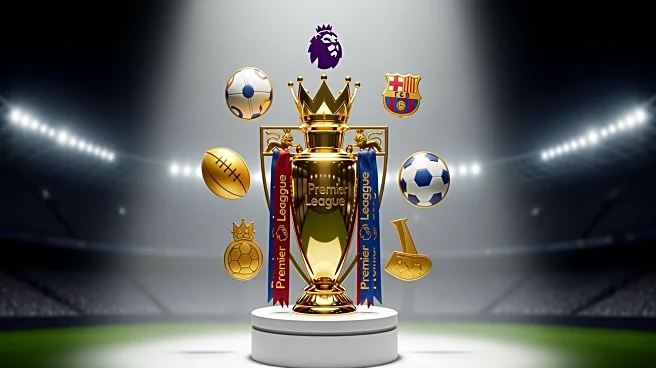What's Happening?
The 2025/26 Premier League season showcases a wide wage gap among clubs, with each team having a highest-paid player. Notable earners include Erling Haaland at Manchester City, earning £525,000 per week,
and Mohamed Salah at Liverpool, with a weekly wage of £400,000. These salaries reflect the players' contributions and the clubs' financial strategies. The list includes both world-class superstars and surprise earners, highlighting the diverse financial landscape of the league. Clubs are investing heavily in key players to maintain competitiveness and achieve their goals.
Why It's Important?
The wage structure in the Premier League is crucial for understanding the financial dynamics of the league. High salaries attract top talent, enhancing the league's global appeal and competitiveness. These wages also reflect the clubs' priorities and strategies, as they invest in players who can deliver results. The financial commitment to players impacts the clubs' budgets and their ability to make future investments. Understanding the wage structure provides insights into the economic landscape of English football and its influence on the global market.
What's Next?
As the season progresses, clubs will need to manage their wage bills carefully, balancing investment in star players with financial sustainability. The focus on high salaries may lead to increased scrutiny from fans and analysts, influencing clubs' decisions in future transfer windows. The Premier League's financial landscape will continue to evolve, with clubs seeking ways to maximize their investments and maintain competitiveness. The impact of these wages on player performance and club dynamics will be closely monitored.
Beyond the Headlines
The high salaries in the Premier League raise ethical questions about the financial disparities in football and the pressure placed on players to justify their wages. This trend reflects broader economic shifts in the sport, where financial power plays a significant role in shaping club strategies and league dynamics. The focus on wages highlights cultural changes in football, emphasizing the importance of financial investment in achieving success.











